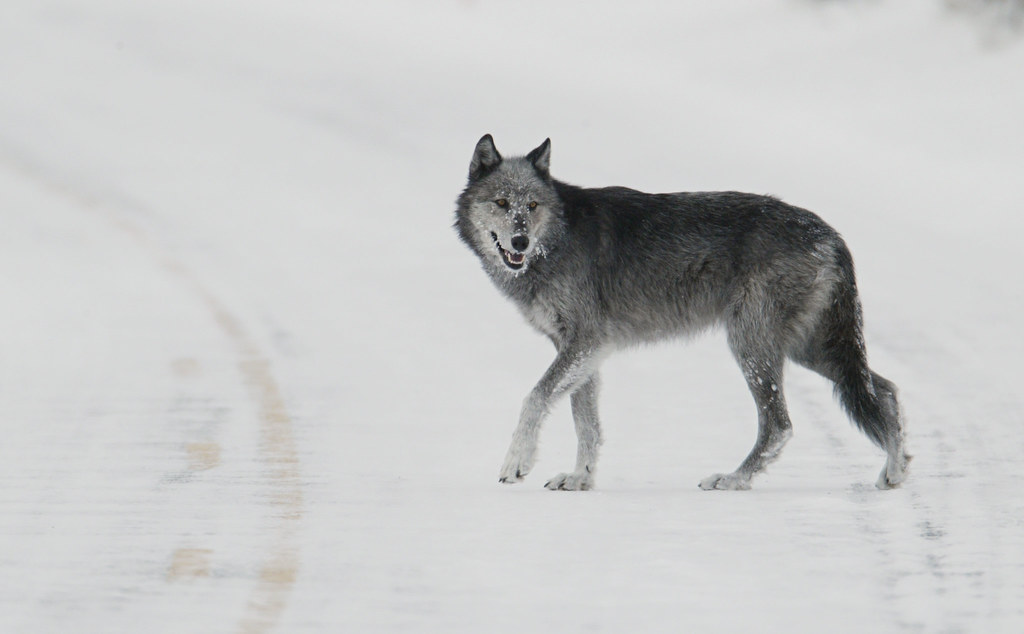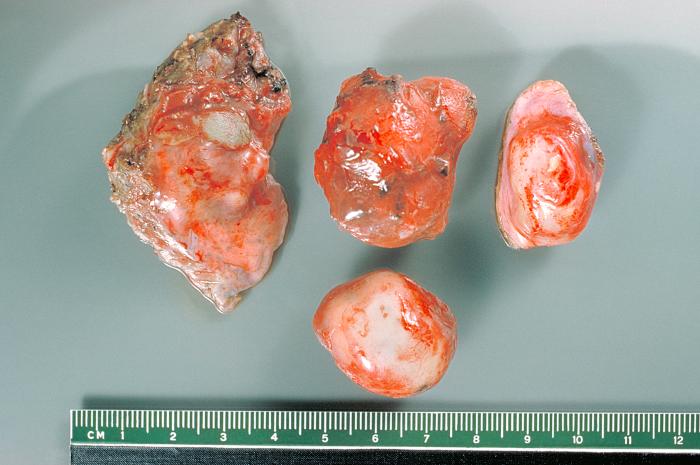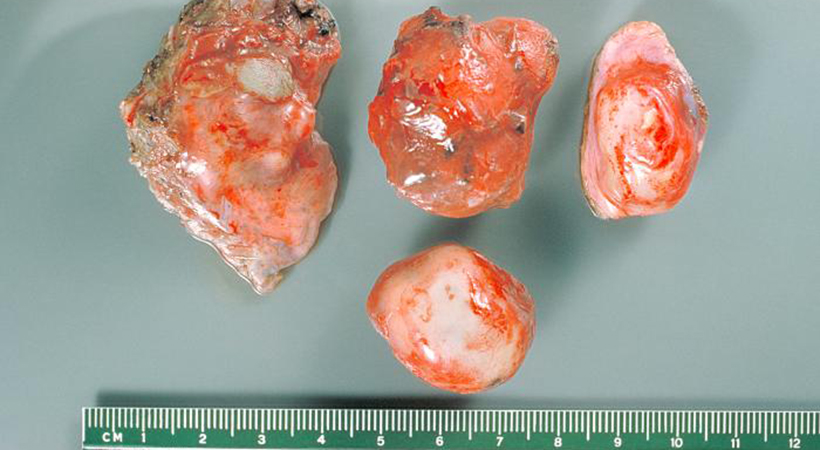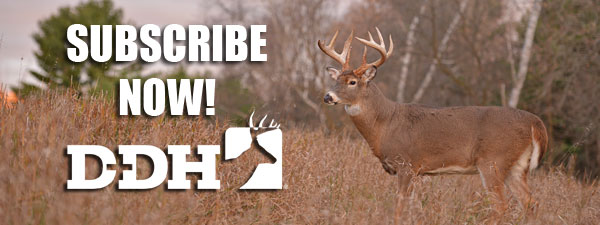D+DH In-Depth is our premium, comprehensive corner on America’s No. 1 game animal. In this graduate-level course, we’ll teach you about deer biology, behavior, and ultimately, how to become a better hunter. Want to be the first to get our premium content? Become a D+DH Insider for FREE!
Editor’s Note: Dr. Valerius Geist first reported on hydatid disease in the June 2010 issue of Deer & Deer Hunting.
Increasing predator populations across North America have piqued the interest of whitetail hunters everywhere. Some sportsmen view increased predator populations as a threat to local deer herds, while others see bonus hunting seasons and/or wildlife viewing opportunities.
However, as is the case with nearly all things wild, increased populations often bring negative consequences. In the case of wild canines, these can include deadly human consequences such as hydatid disease. The affliction is nothing new — it’s been around for centuries — but it should be recognized by anyone who now finds himself living and/or hunting in places like Montana, Idaho and the Upper Great Lakes states — Minnesota, Wisconsin, Michigan — where wolves and coyotes are becoming more prevalent.
Hydatid disease, caused by the dog tapeworm Echinococcus granulosus, and the fox tapeworm E. multiloccularis, is not prevalent in all of whitetail country. However, deer hunters who travel to areas where this disease exists in order to hunt deer, elk, moose or caribou, should be aware of its dangers.
Hydatid disease is something of a personal matter with me. A relative of mine died of this disease, and my maternal grandfather quickly took steps to insure that his family took sensible precautions. He instructed them not to pet dogs and — if they did — to wash their hands as quickly as possible.
His mantra: Before you touch food in serving others or to eat yourself, always wash your hands. His wife and two daughters took that very much to heart, and I was instructed, in turn, by my mother and grandmother. His instructions were and still are spot-on, excellent advice.
Personal History
As a graduate student at the University of British Columbia in the 1960s, I took classes from a highly regarded professor of parasitology. He dealt with hydatid disease from two major sources: the dog tapeworm E. granulosus, and the fox tapeworm E. multiloccularis. He dealt with it in a no-nonsense fashion, treating the disease as serious, especially infections with E. multiloccularis.

My professor’s advice went well beyond that of my grandfather’s. He addressed especially those of us who would be biologists in the field and would handle wolves, coyotes and foxes. These tiny tapeworms inhabit (by the thousands) the gut of canids, and shed massive amounts of eggs into the feces of canids. The trouble is that when these feces dry, the tiny eggs readily become airborne. They stay suspended and can travel some distance beyond the feces before they settle on vegetation.
Consequently, we were instructed, if you are studying food habits of canids, do not poke around in dry feces to see what’s in it, because you will liberate puffs of the tiny dry eggs. They will stick to your clothing and skin, and they will get into your mouth cavity if you lick your lips or inhale through the mouth. They will also be swallowed by you along with your sputum.
Once swallowed, the tiny eggs can proceed into your body and infect you with hydatid disease. The disease will cause cysts that will continually grow larger over time.
When Infection Sets In
The cysts might form anywhere, but preferentially in beds of capillaries, such as the liver, the lungs or the brain. However, cysts forming in bone marrow can also be nasty. These cysts are, of course, growing bags of liquid containing tiny heads of thousands of tapeworms. The inner walls of the cyst are formed from parasite tissue, and buds off these tiny tapeworm heads as it grows and grows. These masses of tiny baby tapeworms have been labeled hydatid sand. In humans, they will not go anywhere. They will die on the operating table or with their host.
The effect of the cyst varies from innocuous to lethal, depending where it grows. If it grows in the brain, it’s lethal. If it grows in the liver or lung, depending how many cysts there are, and how long they have grown, it may or may not be noticed until it interferes with metabolism and breathing and generates various symptoms. If you have a number of cysts within you, or your immune system cannot handle them well and the cysts grow to the size of a grapefruit or more, you will be in trouble.
You’d be in even worse shape if you caught an infection of Echinococcus multiloccularis, because this infection has cysts that bud off other cysts and which, like a cancer, spread throughout the body, and interfere with physiological and mechanical functions. If diagnosed in time, large cysts can be removed surgically in a very delicate operation. Great caution must be taken that the cyst does not burst, spilling the infective fluid, pieces of the cystic wall and, of course, the tiny tapeworm heads. A burst cyst can cause allergic shock, and it will instantly re-infect the area so more cysts will grow where the spillage occurred.

On many occasions, however, the person infected will know nothing of the parasite within and will carry on normally, compensating unconsciously for the effects. And this can go on for a long time … if not a lifetime. As mentioned earlier, it depends where the cyst happens to grow, as well as how fast it grows. In that regard, hydatid disease is a fairly “silent” disease that is very difficult to diagnose.
The Disease in Deer
Humans are the accidental host of the dog tapeworm, and a dead end host at that. Normally, eggs shed with feces are gently blown onto the surrounding vegetation. They are very light and readily float in the air, and can thus disperse some distance from the dry fecal pile.
The eggs then cling to grasses and the leaves of herbs and shrubs, where they are eaten by deer, elk and livestock. Once they enter an elk or deer, they form cysts, which eventually disable the animal — weakening it so it becomes prime prey for wolves or coyotes. The wolf or coyote then eats the cysts along with the tissues. The cystic walls are digested by the wolf’s or coyote’s digestive juices, and the tiny baby tapeworms are liberated in mass where they attach themselves to the intestines. From there, they grow into tiny adult tapeworms that then produce millions upon millions of eggs that enter the animal’s feces. The eggs are then expelled to the outside where the cycle begins anew.
Vegetation around the scats of infected wolves, coyotes, foxes or dogs thus becomes covered by the eggs of the dog tapeworm and all grazers are at risk … as is anyone who pokes around in infective feces. Because these eggs can land on berries and mushrooms, they form a danger to berry and mushroom pickers, a real concern where such activities are popular. However, cooking mushrooms and berries will kill the tapeworm eggs.
Be Smart & Safe
What we need to know is how to deal with this disease sensibly. There is no danger in eating the meat of any deer, elk, moose or caribou infected with Echinococcus cysts. However, deer hunters make sure the offal is disposed of in a manner that domestic dogs do not feed on it.
Herein lies a real danger. In areas with hydatid disease, dogs roaming the countryside alone or with their masters on walks, during hunting or as working herding dogs, might come across a dead deer or elk, or gut piles left by hunters, feed on it and become infected with the tapeworms. Dogs might also roll on infected feces, getting the infective tapeworm eggs directly into their fur. An infected dog will shed these dangerous tapeworm eggs massively in its feces, infecting the kennel and the yard. In these cases, a person could inadvertently track the disease into his house on the soles of his boots.
Moreover, dogs will groom themselves, lick their anus and then their fur and spread hydatid eggs throughout their fur. Therefore, when you pet a dog, you can get hydatid eggs on your hands. Unless you wash your hands immediately, you might transfer these eggs to the food you handle, be it in serving others or eating by yourself.
It is self evident that in areas where deer or elk carry Echinococcus cysts — and most wolves, coyotes or foxes are infected with these tapeworms — handling dead canids or their raw furs also poses a danger to the trapper or hunter. The infective eggs might be present throughout the pelt of the wolf, coyote or fox. Consequently, it’s best to use rubber gloves handling dead canids and scrupulously wash hands and exposed skin after handling such. Note that coyotes and foxes may also carry the more dangerous fox tapeworm E. multiloccularis.
Treatment is Crucial
For dog owners living in areas where deer and elk carry hydatid disease, there is of course a problem. Outdoor dogs need to be dewormed regularly, and dog feces quickly removed and disposed of to insure parasite eggs are destroyed.
Children, toddlers especially, are at at greater risk, so it is essential to treat all of your dogs — whether they are pets or working dogs. Also, the family doctor needs to be cognizant of symptoms indicating hydatid disease.
Some drug treatments have been shown to contain the disease — provided it is detected in time, and provided the cyst is not in the brain.

What measures can be taken to control hydatid disease? Severely controlling free-living canids and their prey will, undoubtedly, lower the incident of the disease in predators and prey. It’s a problematic option.
Echinococcus multiloccularis, the most dangerous of canid tapeworms, has, as a common host, rodents, and these are notoriously difficult to control. Moreover, it is likely that not only foxes will carry it, but also coyotes and probably some wolves. Severe wolf and coyote control may reduce the prevalence of Echinococcus granulosus, but that will have little effect, if any, on E. multiloccularis. Regular prescribed burning of big-game winter ranges that are heavily visited by wolves and coyotes may kill off enough Echinococcus eggs on the vegetation to have an impact on the parasite. It might also help to saturate areas of high wolf, coyote or fox abundance with medicated bait to purge their guts of tapeworms.
Unfortunately, because wolves roam great distances, they will continually re-infect Echinococcus-free regions. This implies, of course, that controlling these parasites cannot be local matter but needs to be coordinated and applied over large areas … beyond the boundaries of any state or province. Once started, control measures, clearly, must be ongoing.
In the meantime, take these steps to reduce your chances of infection:
- De-worm your dogs and remove their feces from your yard.
- Keep your hiking boots outside the house or wash them after each hike.
- Do not pick mushrooms and berries close to dog, wolf, coyote or fox feces.
- Use rubber gloves and lots of plastic bags when handling dead coyotes, foxes or wolves.
- Religiously wash your hands, especially before reaching for that sandwich.
Conclusion
The deeper tragedy of hydatid disease is that it is one more factor that turns our wildlife from a treasure to a curse. The introduction of diseases along with wolves was treated in a rather cavalier manner.
The matter of wild canine diseases and parasites does not terminate with hydatid disease, because it also concerns neospora, rabies, tuberculosis, brucellosis and other diseases. Moreover, it hits the ranching and rural population disproportionately. They not only have to face painful losses of livestock and pets, lose hunting opportunities as wildlife declines, but also take more precautions pertaining to diseases than their urban counterparts.
Wildlife can only thrive if it retains the sympathy of rural folks. The so-called ecological benefits of predators (where real) are small compared to disease problems and the loss of political support for wildlife as hunting declines and our excellent North American model of wildlife conservation is jeopardized.
Therefore, in my opinion, some reevaluation is required.
— Valerius Geist, PhD, is a professional biologist and professor emeritus of environmental science at The University of Calgary in Alberta. He is widely considered to be one of the world’s foremost authorities on large-mammal biology and management.
Want to be the first to get our premium content? Become a D+DH Insider for FREE!


